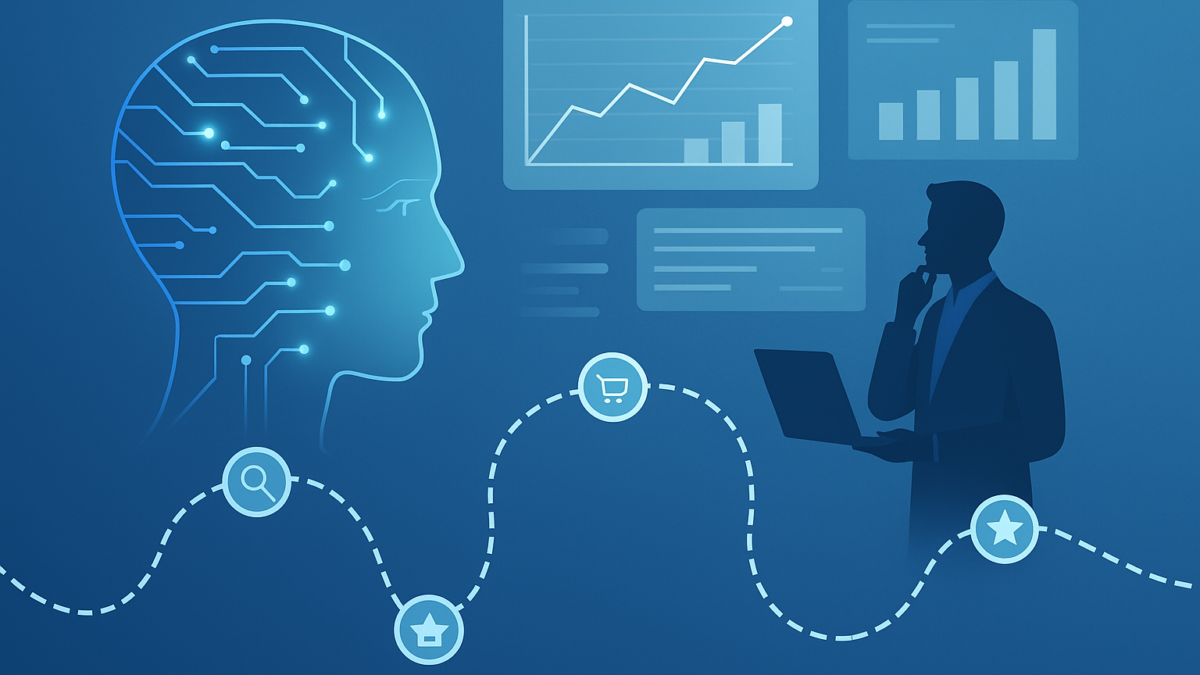How AI Is Transforming Customer Journey Mapping in B2B
Introduction: The B2B Shift to Data-Driven Journey Mapping
The modern B2B customer journey is no longer linear. Buyers conduct independent research, compare vendors digitally, and often make decisions without ever speaking to a sales rep. To stay relevant, businesses must understand and optimize every touchpoint—and that’s where AI-driven customer journey mapping becomes a game-changer.
From automating behavior tracking to predicting next-best actions, artificial intelligence is transforming how B2B marketers map, analyze, and improve the customer experience. This blog explores how AI reshapes journey mapping and offers insights for companies ready to embrace smarter engagement strategies.
1. What Is Customer Journey Mapping in B2B?
Customer journey mapping is a visual representation of a buyer’s interactions with your brand across different stages—from awareness to decision-making and beyond.
In B2B, these journeys are typically:
- Longer and multi-touch
- Involving multiple stakeholders
- Heavily content-driven
- Spanning across various channels (email, LinkedIn, webinars, etc.)
The goal? To understand customer behavior and tailor strategies for better engagement, conversion, and retention.
2. Challenges with Traditional Journey Mapping
Traditional customer journey maps rely on manual data aggregation, assumptions, and siloed views. This results in:
- Static maps that don’t reflect real-time buyer activity
- Lack of personalization across buyer personas
- Disconnected insights from sales, marketing, and customer success teams
These limitations make it difficult to act on insights in real-time—a crucial disadvantage in today’s competitive B2B environment.
3. How AI Is Enhancing Journey Mapping
AI enables businesses to create dynamic, adaptive, and hyper-personalized journey maps. Here’s how:
Real-Time Data Processing AI tools can process vast amounts of data from CRM, email engagement, social media, website interactions, and ad platforms—instantly updating journey maps with the latest user behavior.
Behavior Prediction Using machine learning algorithms, AI can predict buyer behavior, identify drop-off points, and recommend the best content or touchpoint to move leads forward.
Segmentation & Personalization AI helps segment users based on intent signals and engagement patterns—allowing marketers to personalize content, messaging, and timing at scale.
Journey Orchestration AI-powered platforms like Salesforce Einstein or Adobe Journey Optimizer automate engagement flows based on predefined rules, ensuring the right message reaches the right buyer at the right time.
4. Key Benefits for B2B Marketers
Improved Lead Qualification AI evaluates multiple buyer signals, from content consumption to time spent on site, and scores leads with greater accuracy—enabling better alignment between marketing and sales.
Smarter Content Delivery AI maps content to each stage of the journey and automatically serves the most relevant assets—such as whitepapers, case studies, or webinars—to maximize engagement.
Enhanced ABM Campaigns In account-based marketing, journey mapping powered by AI helps identify decision-makers, customize outreach, and track multichannel engagement across the account.
Faster Deal Cycles With timely interventions and contextual recommendations, AI helps reduce friction, align stakeholders, and accelerate the path to conversion.
5. Real-World Example: Using AI in Journey Mapping
A leading SaaS company integrated AI with their content syndication and CRM tools. Here’s what changed:
- AI identified content preferences based on behavior.
- Journey maps dynamically adjusted to display the buyer’s most likely intent.
- Lead scores updated in real-time, helping sales reps prioritize better.
Result?
30% increase in MQL-to-SQL conversion rates and a 22% decrease in sales cycle time.
6. AI Tools to Support B2B Journey Mapping
If you’re ready to implement AI in your journey mapping strategy, here are some powerful tools:
- Salesforce Einstein – Predictive analytics and smart engagement.
- HubSpot Operations Hub – AI-powered automation and segmentation.
- PathFactory – AI-driven content engagement tracking.
- 6sense – Predictive ABM and buyer intent detection.
7. How to Get Started: Step-by-Step Approach
- Audit Existing Journeys
Identify touchpoints, drop-offs, and areas of friction across current B2B journeys. - Define Key Goals
Decide if you want to improve lead scoring, personalization, or conversion rates. - Choose the Right AI Tools
Align tools based on your existing martech stack and desired outcomes. - Integrate Data Sources
Unify your CRM, email marketing, and web analytics for complete visibility. - Test and Optimize Continuously
Use A/B testing and AI insights to refine strategies and improve journey performance.
8. Final Thoughts: AI Is the Future of Journey Mapping
In the age of real-time marketing, static journey maps no longer cut it. AI empowers B2B companies to move from reactive to proactive customer experience strategies. With dynamic mapping, predictive insights, and smarter automation, you can deliver the right message at the right time—driving deeper engagement and stronger conversions.
Call-to-Action (CTA)
Looking to unlock the power of AI in your customer journey strategy?
Explore how iTMunch’s Content Syndication & Lead Generation Services can fuel your AI-driven marketing engine.
Let’s build smarter journeys—together.





